I don't really want to start a new thread on my experience at the Canadian Nationals - but I thought I'd add to this thread to report back on how things all worked out. I had decided on increasing the spring rate on the front and rear...and even if it made no difference at all, it might have given me a bit more confidence.
The BeginningsThe stock spring rates are(spring rates are different from wheel rates as spring rates do not account for the motion ratio of the suspension - for our adventure here, I'll deal in spring rates for now):
Front spring rates = approximately 120 lbs/inch
Rear sedan rates = approximately 114 lbs/inch
By any modern standard these rates are very light for a sporting car, in fact they are soft as cheese by any measure.
ModificationOne of the first things I did was to acquire better shocks/struts (can we just call them dampers?) for the car in the form of Bilstein HD's. Remember, the function of a damper is to control the oscillation of the spring and as such it's a velocity control system. Top tip - if you think your shocks are done, don't move them through their travel slowly...fully extend them and give them a quick compression snap by hand. If they move down really easily - they're not doing their job anymore and should be tossed...you can also tell as they will probably be covered in oil.
The initial rebuild of the car had me running lowering springs with the following spring rates:
Front spring rates = approximately 157 lbs/inch
Rear sedan rates = approximately 140 lbs/inch but they are variable rate - so hard to evaluate.
So this was how I was running the car all year. I don't have a ton of grip to start with and in roll, I was pulling the outside tire mostly off the ground. Now, I understand that the outside tire isn't the weighted tire in a turn to start with, but this is sort of the opposite of what you folks driving the Focus/Fiesta's experience when you "tripod" a rear tire.
When this happens on a front tire - it doesn't build a lot of confidence for a novice driver.
For example - here I am at the end of a reasonably open slalom.
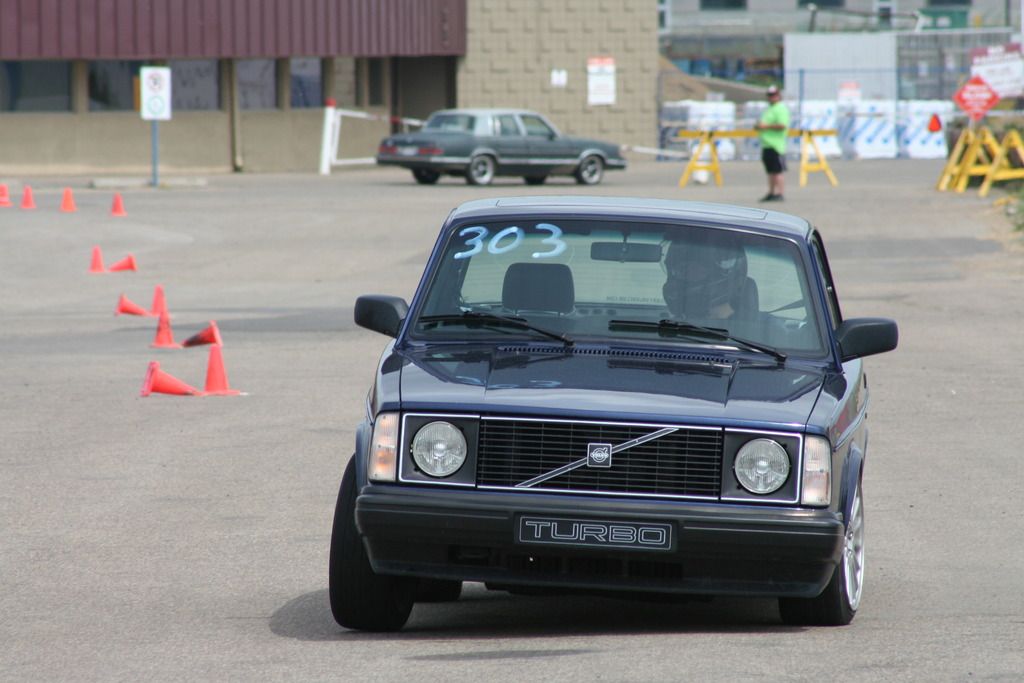
And here's a look at what happens during a transition.
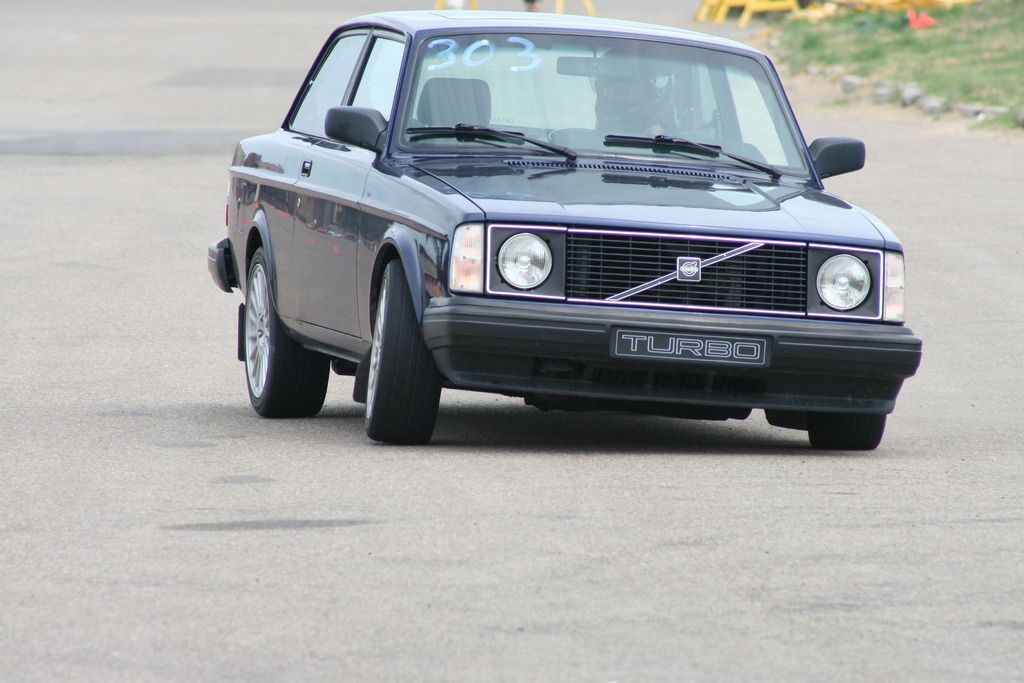
So one of the reasons to start this thread was to investigate what I can do to tune this behaviour out of the car. One of the aspects that I knew I could change was to stiffen up the spring rate to counteract the weight shift of a turn. In essence, push the car back upright by providing more spring for it to lean on. The car is already running an aftermarket anti-roll bar for those that immediately start thinking in that direction. With a strut suspension system, the roll centre is very low (close to the ground) this acts as a moment arm on the centre of gravity of the car (let's call that the crankshaft centre or a bit higher for argument sake) and there isn't much you can do about that by way of modification. The greater this distance, the easier it is for your car to rotate. Counteracting this force is done by both springs and anti-roll bars (which are just springs) Over all, the car is way too soft for autocross.
TuningThere just isn't much out there for springs - the stock options are out there but have very limited variety. The size of the spring limits what you can fit as it's an odd size (about 6.7" OD). You could wander around the JY with a tape measure if you like, or try out the various stock options (10 lbs/inch here or there isn't going to matter all that much in the grand scheme of things). I found an old thread on another forum that outlined how to adapt standard coil over 2.5" ID springs to my struts. Here's what I did.
1. The standard 10" 2.5" ID springs are a good match to the length needed. You just need to pick a rate - at least 200 lbs/in as a start point (from what I've read). They are cheap at $110 per set at Coleman racing - lots of rates to choose from. That's for Hyperco's - good consistent spring - not some eBay nonsense.
2. You maintain the ability to convert back to standard springs - if the results were terrible, I can go back with ease and I've spent $110 USD for the springs and a few dollars more for the lower perch and shipping.
3. Changing it takes only a few hours - so testing and tuning is possible.
MethodRears first:
No spring size exists for the rear of the car and it has a specific attachment pigtail - soI sourced a set of wagon overload springs that are far stiffer than stock sedan springs and I cut 2.5 coils off them yielding about 180 lbs/in spring rate.
Front Struts:
Front struts were next. They required the 2.5" springs, some 2" sch 40 ABS (2" pieces - cut a slit so they fit over the strut tube), and a set of coleman racing lower spring perch spacers. The perch spacers were originally 1" tall, so I cut them down to 1/4" and had to sand the ABS until it was a snug fit on the strut and lower perch.
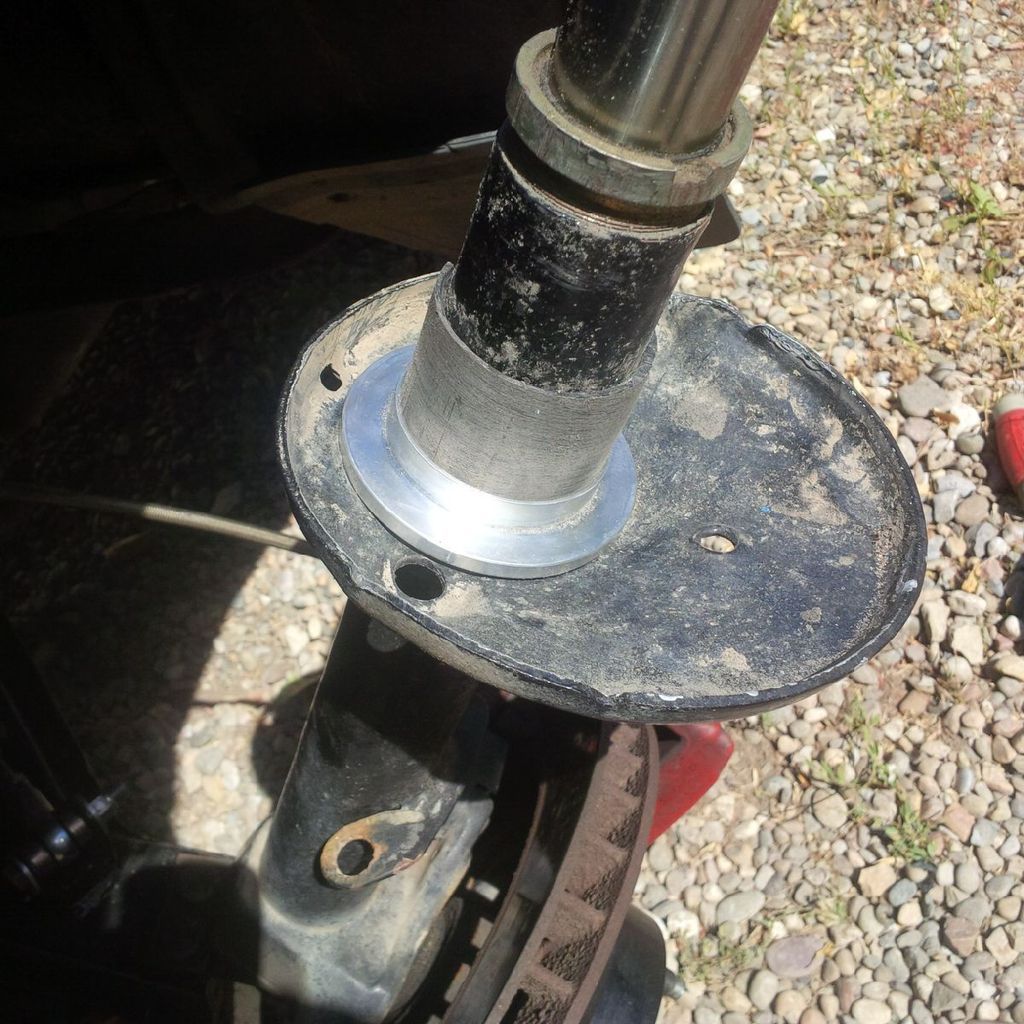
Then the upper spring perch - the stock one - is modified by adding a piece of 2.5" exhaust pipe 1" long to work as a register for the spring. The OD of the spring is a nice fit into the ridge of the inside of the upper perch. Looks like this.

Put it all back together and put it back in the car. Done. This picture was from the first test before I cut the lower perch down.
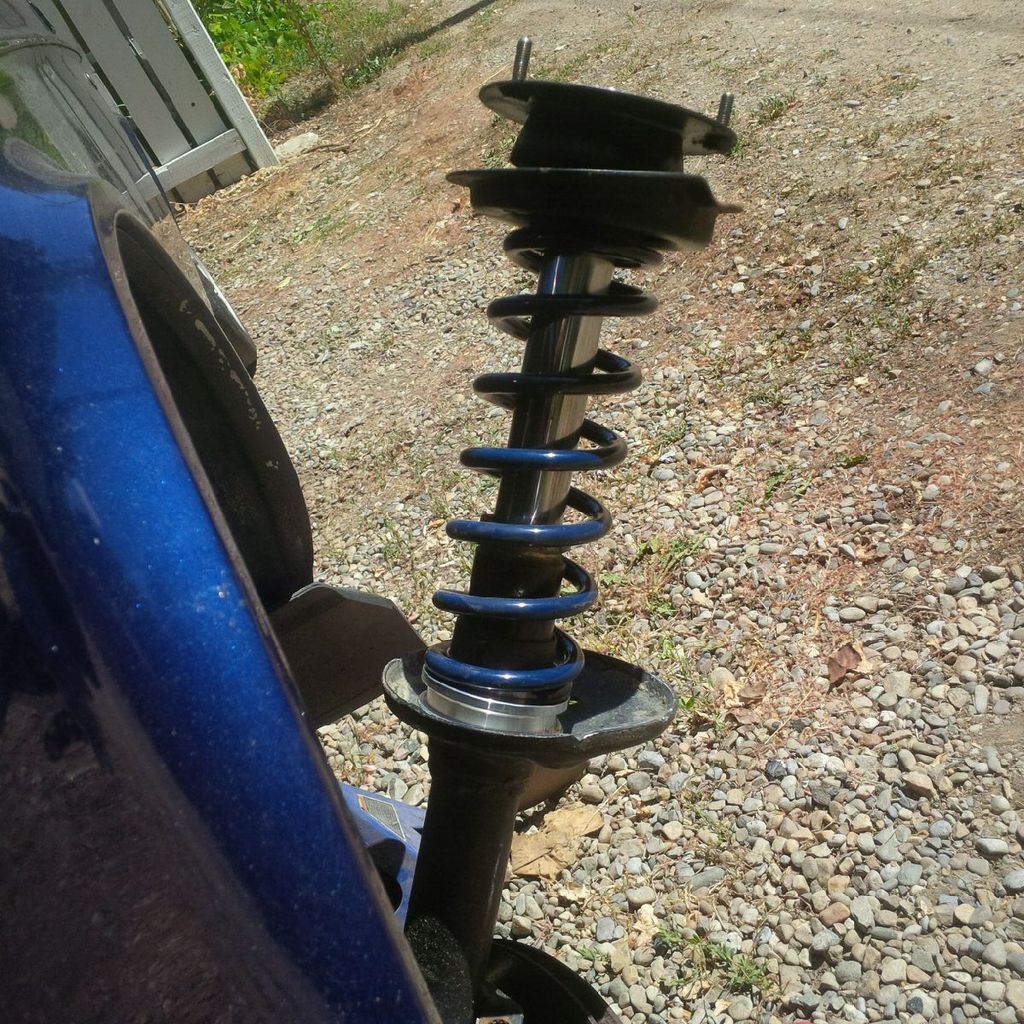
Here it is in the car. Now with 300 lbs/in of spring rate.

Now, you don't get to adjust much - that's pretty much it. This is the ride height I ended up with. Proper coil overs give you height adjustment and I'll have a set of them in the spring for next season.
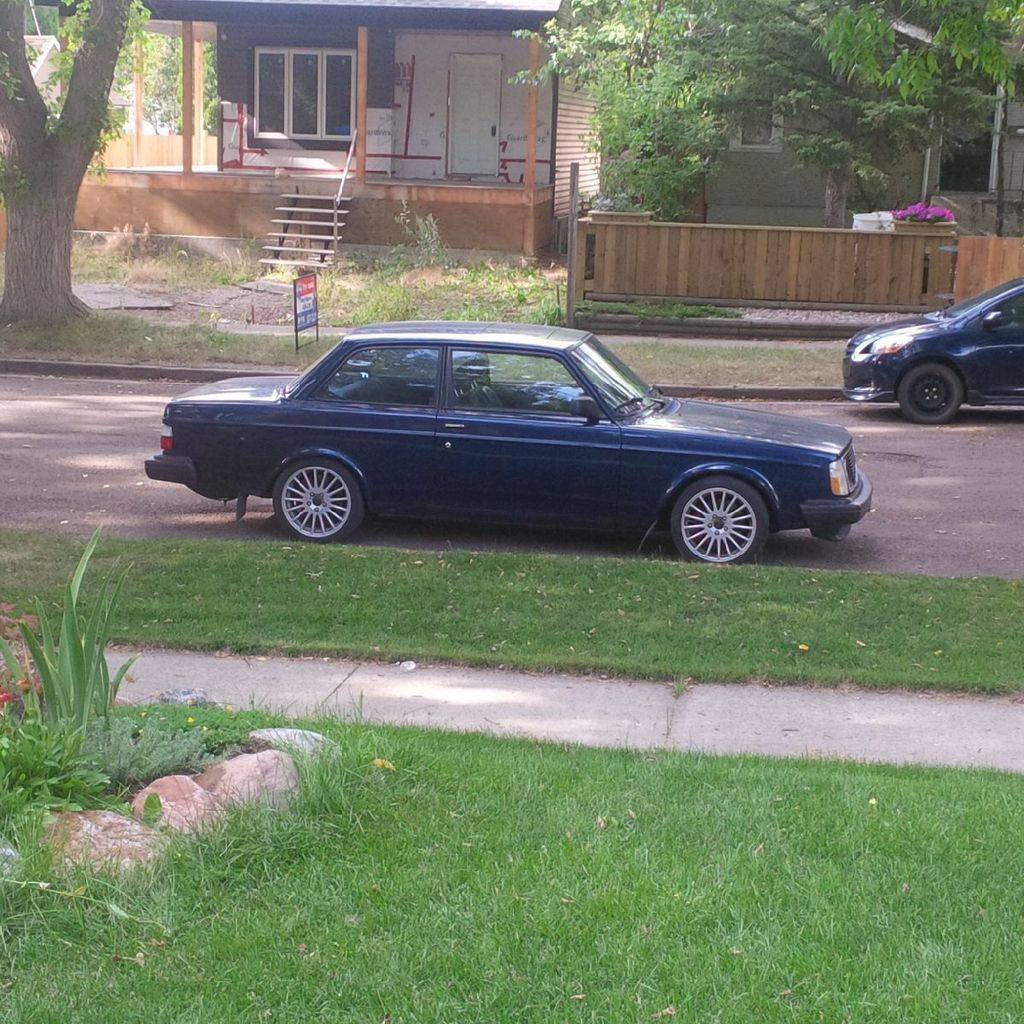 Results
ResultsMy first chance to run the setup was at the Mini SoloPro School (highly recommended). The front/rear balance was very good and while I don't yet have any photographic evidence, I didn't think it was rolling as much. The net effect is that the steering is more sensitive to input. The experience was a lot more confidence inspiring. The car didn't feel like it was going to fall over and another side benefit was that the tires were gripping better and not scrubbing as much.
On to the Canadian Autocross Championship.Wow - what a great experience. I've never competed at a national level in anything, so I put on my big boy pants and entered the Canadian Autocross Championship - my second ever event. Very different overall feel from our regular events - lots of rules at a national event that we just don't see at local events. Race stewards, accounting, cone/penalty records, weights, competition checks of the car. So very much more up-tight...this is a big deal - there's prize money (thousands + sets of tires were won).
This was my first time running the new stiffer springs on the car. Nervous as hell, hoping I don't get lost...in the last run group without a hope of remembering the course. I kept recalling the SCCA Novice instructions:
- Your goal is to have fun! That's why everyone is here.
- Your goal for the first run is to avoid getting lost on course (see course-walking tips)
- Your goal for the rest of the day is to improve your time on each run
- Your goal for the second event is the same as the first.
- Your goal for the rest of the season is to beat somebody (anybody!) and continue to make each run faster than the last.
After the first run group, it also became apparent that my target time based on where I run versus you guys at our regular events would put me dead last - by a margin. I also didn't want to be last - but I reconciled that it would probably happen and that at least I was there and LEARNING A LOT. Anyway with 6 hours between walking the course and running it (that seemed like an eternity), I pretty much forgot what it looked like. Sure, I had a course map, but that doesn't tell you what the sea of cones will look like. More things to work on.
With my marshalling shift over, we were ready to run. I tried to position my car so I wouldn't be running first - and try to see if I could figure it out by watching the other cars. I tried to visualize the course - I was working the first slalom which was right after the start gate - so not much information there. It's the far end of the course where things get complicated. How does that go again?
First run - got tricked by a cone wall that was meaningless - went to the outside of the wall, scattering the marshals and going off course (at least I wasn't on the grass). Then the tunnel vision kicks in and I blow another element or two. DNF #1. Dammit - that wasn't good - time around 77 seconds. Slow - very slow. Terry gives me the "slice through the neck" sign at timing - I know. Ouch.
Oh and it wasn't helping that cars like this were in my class.
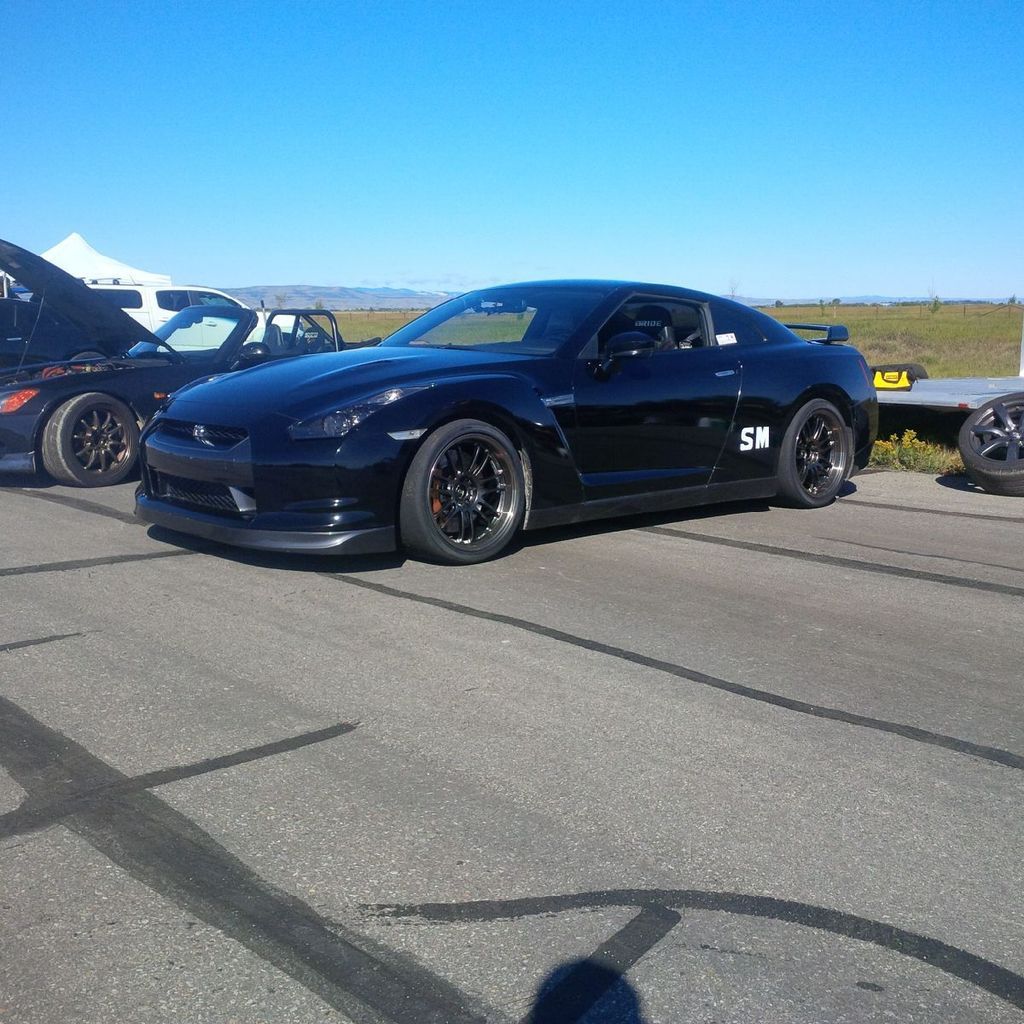
Yup - GTR on slicks...sure, I can beat that guy!

Wait an hour fretting over my off-course to try again. Then promptly on the first slalom, I go off course again at the double cone at the end of the slalom. I get tricked by an element that I stood beside for almost 3 hours! OMG - stupid nerves - FOCUS. Blow a shift..FOCUS - head up, look ahead. What's next? Thrash it throughout the rest of the run and still post an 80 second time. Should be in 3rd gear to get speed up, but just can't get the grip on the big sweepers. Hopeless. DNF #2.
I've got one more chance to make it count - if I don't post a time on day 1 they can't compute an average for me for the event and I may as well not run on Sunday. I'd also be pretty embarrassed - I don't usually get lost on course, but I was super nervous and quite frankly, that many trailered cars with fast drivers was enough to make any novice feel more than a bit out of place.
On to the third run. Focus - I can do this. No time to quit. And rev it up and dump the clutch - off we go. I've never been so happy to get a post-it note with a time on it in my life. I've got a time. I'm dead last, but I've got a time. 77.9 seconds would make most of you guys hang yourselves and I'm over the moon. I get to run on Sunday.
One of the perks to running in SM is that you have to be weighed. I, of course, have no clue about this rule and am feeling stupid pulling up tho the scales. I'm guessing you have to be over your minimum weight? Everyone was really nice about me not wanting to jack directly on my freshly painted differential. Totally cool - my cut rear springs were pretty accurately done! The rest of the weight bias would be caused by the battery. And I now have corner weights that the shock guys will want to work out new valving (I'm not done tinkering yet (ever?)).

Lighter than it looks - lots of people surprised by this. Slower than it should be, but that's my fault.
The run groups were reversed for Sunday, so I was able to walk the course and then run it right away. I don't talk to many people - have to keep the course in my head. There were many changes (things flipped, directions changed in the turn around) and other tricks. I line up to go late in the run as the Sun is still low and I don't really need to be blinded running into the Sun. Come on - I need every advantage even if it's just perceived. I make it around - don't get fooled - few elements needed work, but no cones, so I'm happy. 77.9 seconds. Dead last but I now have a combined time.
Run 2 - Clean up a few things, get to the back of a few cones, but am dealing with a car that wouldn't idle and was cutting under boost. Who knows what's wrong. I run it anyway - WTF. Several competitors come by to offer their analysis - so it wasn't just me that noticed it behaving badly. Feels like it's got power low down, but upper RPM is just runs out of breath. Not like I can analyze it while frantic driving. I can feel that it's slow, but I'm not at the limit of the tires in this run. The springs really helped and my driving has improved. 74.91 seconds - hey, that's 3 seconds faster. That's huge. That would be enough to put me on the tail of the next slowest guy. I may not be last after all.
Run -3 - As soon as I fire up the car the idle is fine and we've got power again. Maybe ECU related. Who knows? No time to ask questions. Gotta get rolling. I'm "flying" through the track this time. Riding the edge of traction, I can feel it wiggling around under me on most corners, hitting most of the areas that I needed to improve. No understeer on turn arounds (it was me after all) - hitting the power on and brake points just the way I had visualized (if they were right or not...who can tell). I fly through the finish and the LED screen reads 73.742. I let out a huge cheer to the complete confusion of the timing workers (for whom this is a painfully slow run). That's as good as I can do at this stage - it's all been left on the track. You can tell I'm a raw rookie as I'm moving 4 seconds in 3 runs...most of the other competitors are are scrapping at tenths. No cones today.
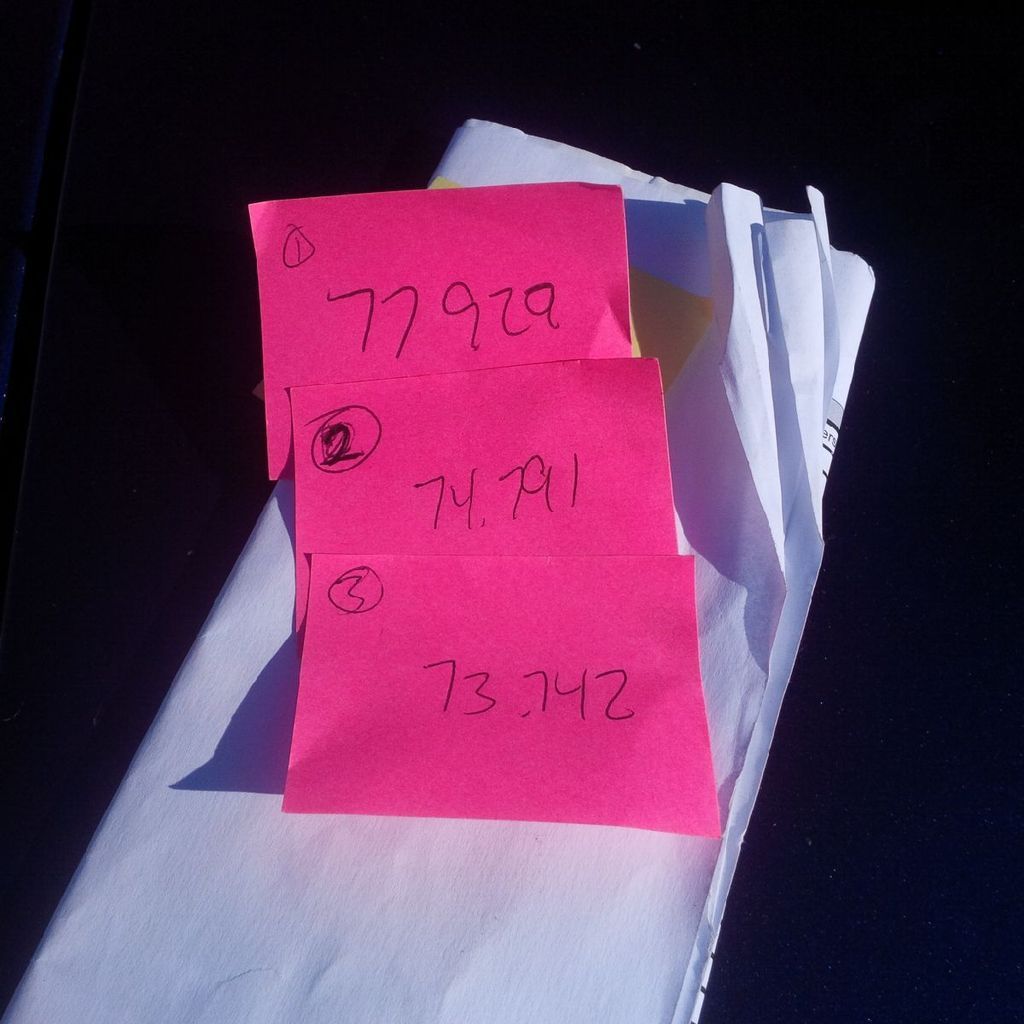
So that's one mission accomplished. I met the 75 second goal. But I'm dead last. Off I go to my marshalling station. Sitting in 88th place. Hey, I'm here - I've learned a lot and the other competitors are not telling me to leave and never return. So that's not the end of the world.
Then as I check the online scoring again, I notice (about half way through the last run group) that two cars didn't make it to the grid. They post no times and I'm now sitting in 86/88 in PAX...I wasn't dead last! Hey, if your car brakes, that's not my problem - they posted times Saturday and didn't Sunday. Woo-hoo.
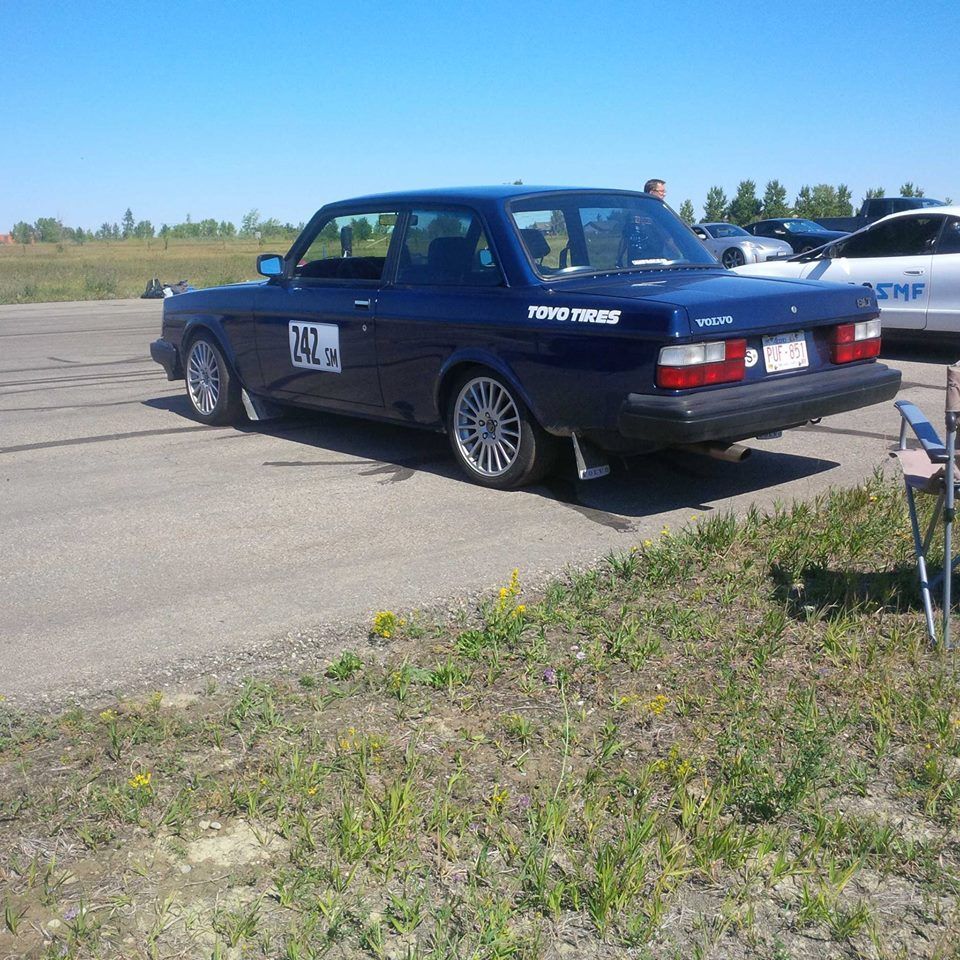
 Welcome, Guest. Please login or register.
Welcome, Guest. Please login or register. November 21, 2024, 08:08:47 PM
November 21, 2024, 08:08:47 PM Users: 0
Users: 0 Guests: 42
Guests: 42 Total: 42
Total: 42




